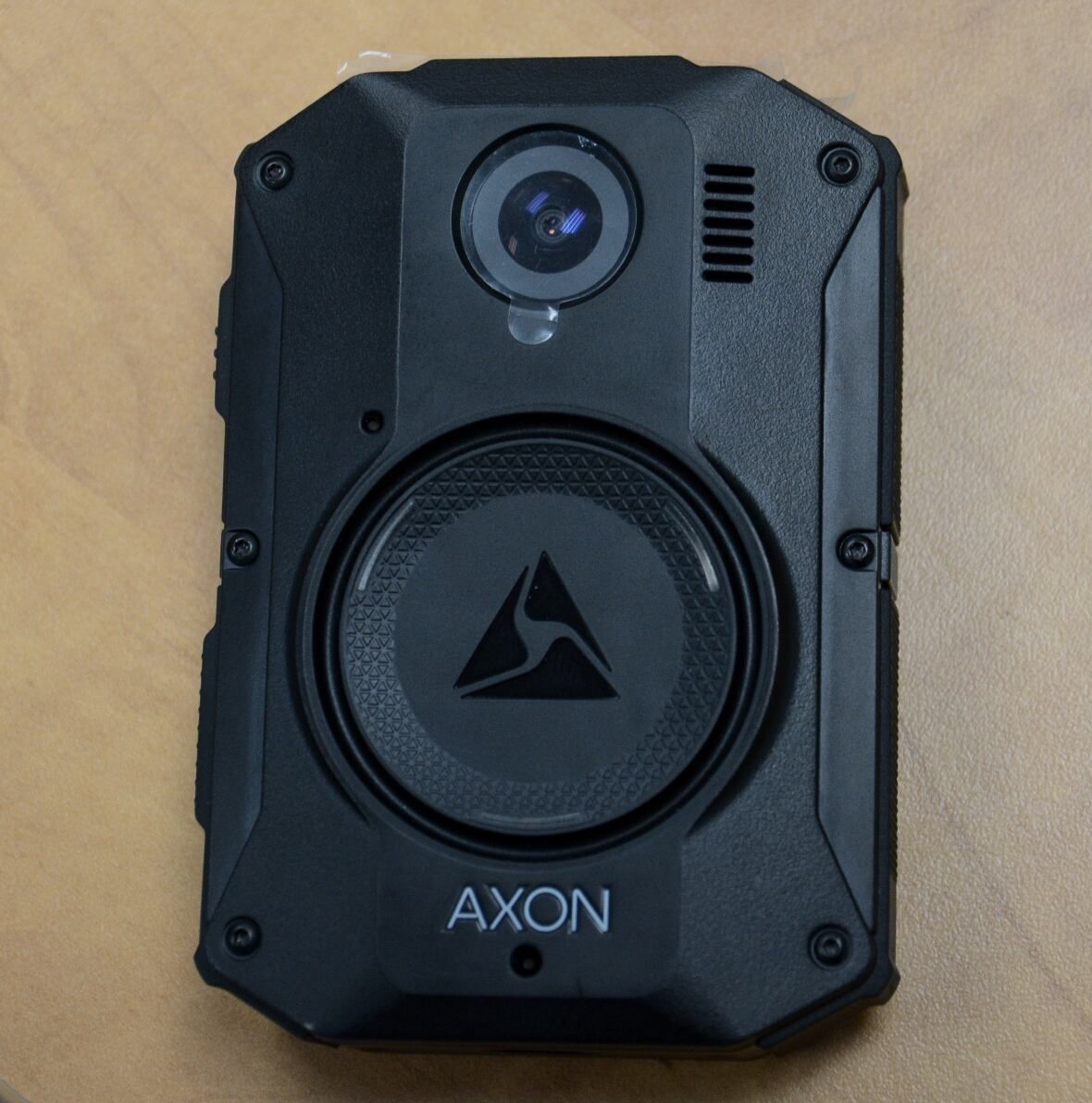Body-Worn Cameras and Digital Evidence Collection

The Body Worn Camera and Digital Evidence Management System (DEMS) represents an important step forward in the Thunder Bay Police Services ongoing commitment to enhance community safety, foster transparency, and ensure accountability within policing.
The Thunder Bay Police Service employs several different components of Axon platforms. These components include body worn cameras, in-car cameras, interview room cameras, mobile interview room cameras and a citizen application that allows for members of the public to upload evidence relevant to police investigations.
The Thunder Bay Police have employed these systems to maximize the use of technology to ensure transparency and accountability with the public in addition to supporting the accuracy and effectiveness of investigations. This offers numerous benefits to both law enforcement and the community, and aligns with Thunder Bay Police Service values of Trust, Integrity, Leadership, Inclusivity and Collaboration.
Key Benefits of Body Worn Cameras and the Digital Evidence Management System:
Transparency and Accountability
Body worn cameras provide an objective record of police interactions with the community, helping ensure that officers adhere to the highest standards of conduct. This transparency fosters greater accountability and trust between our police officers and the community.
Evidence Collection
Body worn cameras capture audio and video interactions, which can be crucial in investigations and court proceedings. The use of applications such as Axon Capture and Axon Community Request Link streamline the sharing and collection of digital evidence.
This reliable evidence helps in the accurate reconstruction of incidents, aiding in the delivery of justice.
Conflict Resolution
The presence of a camera can de-escalate potentially volatile situations. Knowing that an objective record is being made encourages all parties to remain calm and respectful during interactions.
Training and Development
Recorded footage serves as an invaluable resource for training and professional development. By reviewing real-life scenarios, officers can continuously improve their communication skills and tactical responses.
Privacy and Data Management
The Thunder Bay Police Service is dedicated to protecting the privacy of all individuals. These systems provide accountability, while balancing privacy rights with law enforcement needs. The Thunder Bay Police Service has procedures in place to ensure that data collected by body worn cameras is stored securely and accessed only by authorized personnel.
Who will wear Body-Worn Cameras?
Body worn cameras will be deployed to on-duty officers assigned to Primary Response.
Why is the Thunder Bay Police Service using Body-Worn Cameras?
Body worn cameras enhance accountability, transparency, and trust. They also provide unbiased records for court use, address complaints, and support fair outcomes.
When are Body-Worn Cameras activated?
Body worn cameras are activated during: calls for service, investigations, law enforcement activities.
How will I know if I'm being recorded?
Body worn cameras will be visibly worn, with lights indicating activation. While officers aim to notify individuals when recording begins, the timing may depend on safety or operational priorities.
What if I do not want to be recorded?
In public spaces, officers do not require consent to record. In private spaces, recording is dependent on the lawful authority upon which an officer’s attendance at the location is based (e.g. consent of the owner/occupant, exigent circumstances, or in relation to a judicial authorization).
Do the body-worn cameras or digital evidence management system use facial recognition?
No, the body-worn cameras, in-car cameras or digital evidence management system do not employ facial recognition or biometric analysis. Body worn cameras are not used for surveillance or covert recording.
Can the public access body-worn camera footage?
Yes, the public can access footage through a formal request made through the Records Department, at a cost set by Thunder Bay bylaw PC5-2023.
Cases currently before the courts will not be available until court proceedings and the appeal timeframe has passed.
How will body-worn cameras improve safety?
Body worn cameras provide an objective record of events, de-escalate conflicts, and protect officers from false allegations while enhancing public trust.
How will footage be used in investigations and court cases?
Body worn camera footage is treated as evidence, following chain-of-custody protocols. It provides unbiased accounts to support fair legal proceedings.
Can officers edit or delete footage?
No, officers cannot edit or delete footage. The system is designed to prevent tampering, ensuring the integrity of all recordings. Access is limited to authorized personnel under strict protocols.
Will body-worn cameras record all interactions, including casual conversations?
No, body worn cameras are activated during specific operational duties, such as calls for service or investigations. Casual conversations unrelated to policing are not recorded.
Will body-worn cameras be used during sensitive public events or protests?
Body-worn cameras will only be activated during protests when officers believe an offence is about to be or is being committed, or when they are about to engage with members of the public. Their use is not related to general safety monitoring.
How will body-worn camera footage be shared with other agencies, such as courts or media?
Body-worn camera footage may be shared with courts or other agencies as required by law, following chain-of-custody protocols. Media access to footage is highly restricted and governed by privacy laws and organizational procedures.

